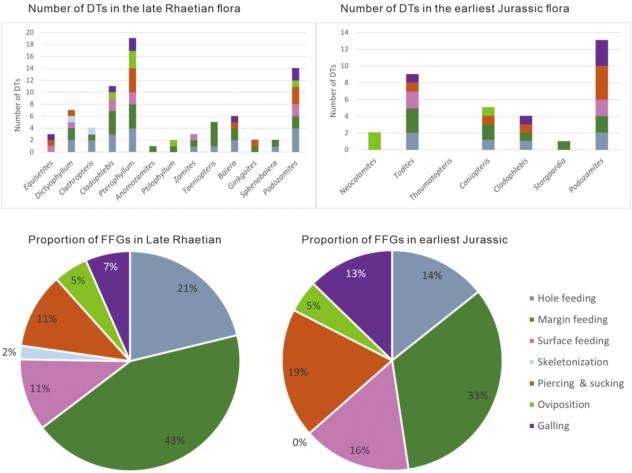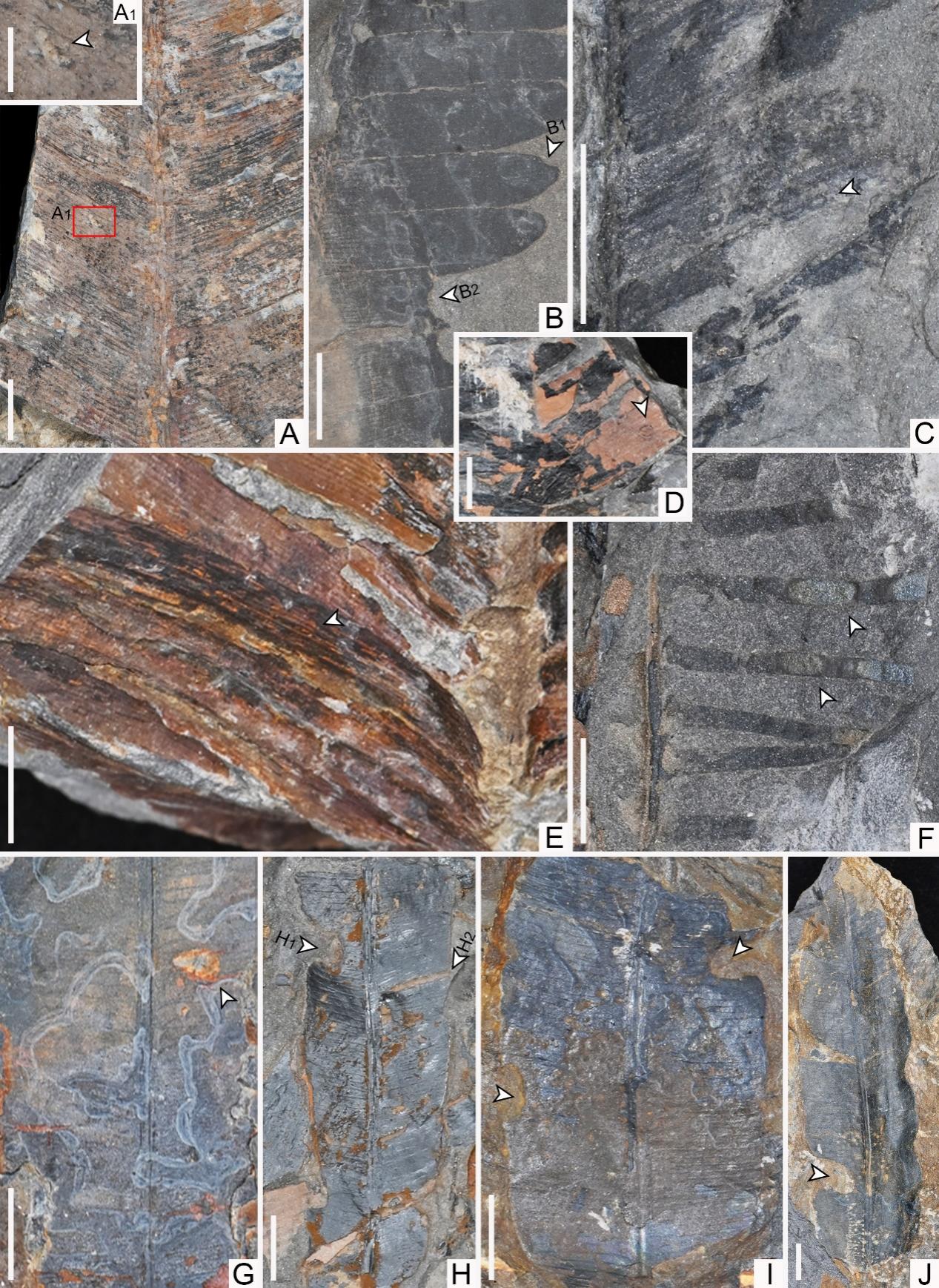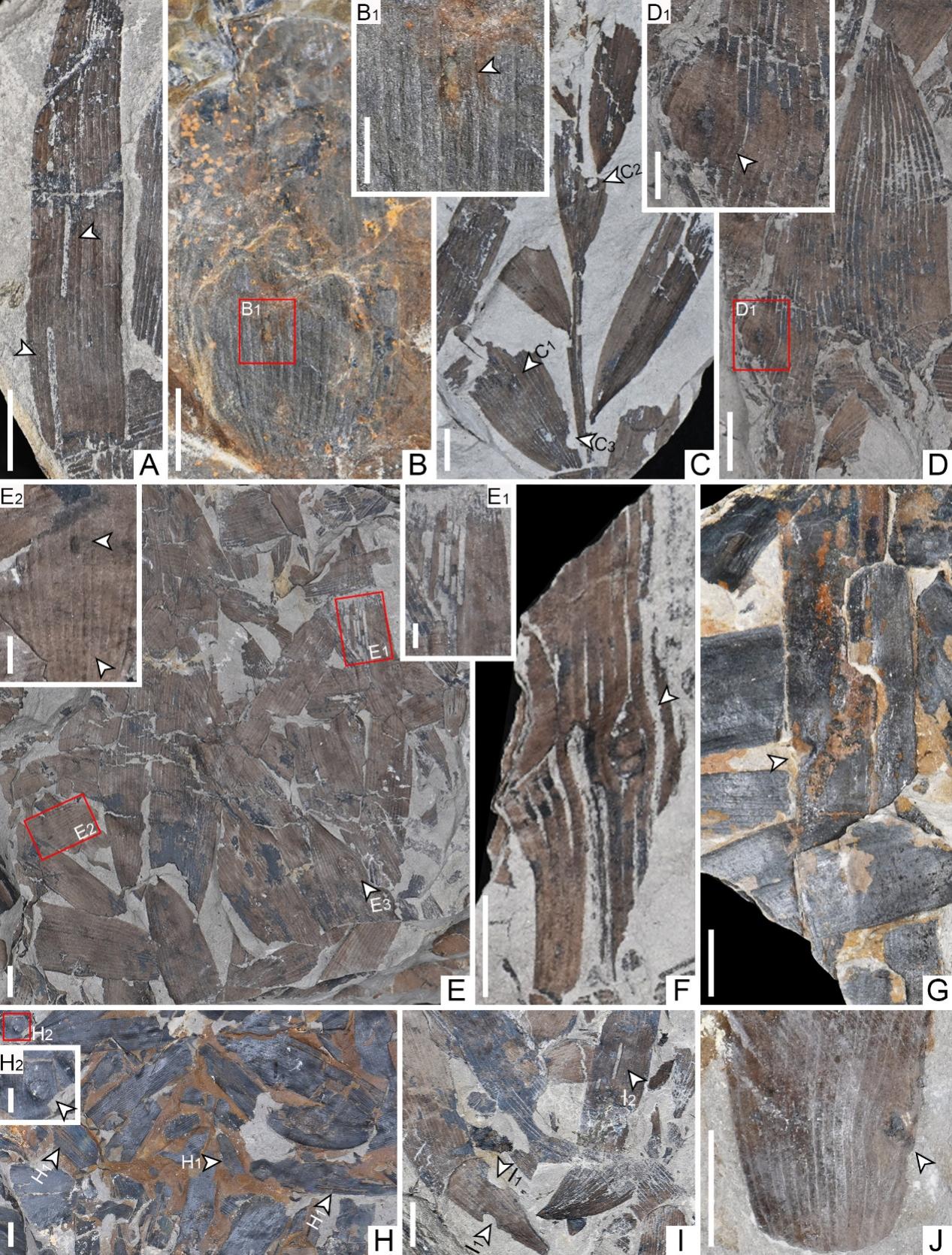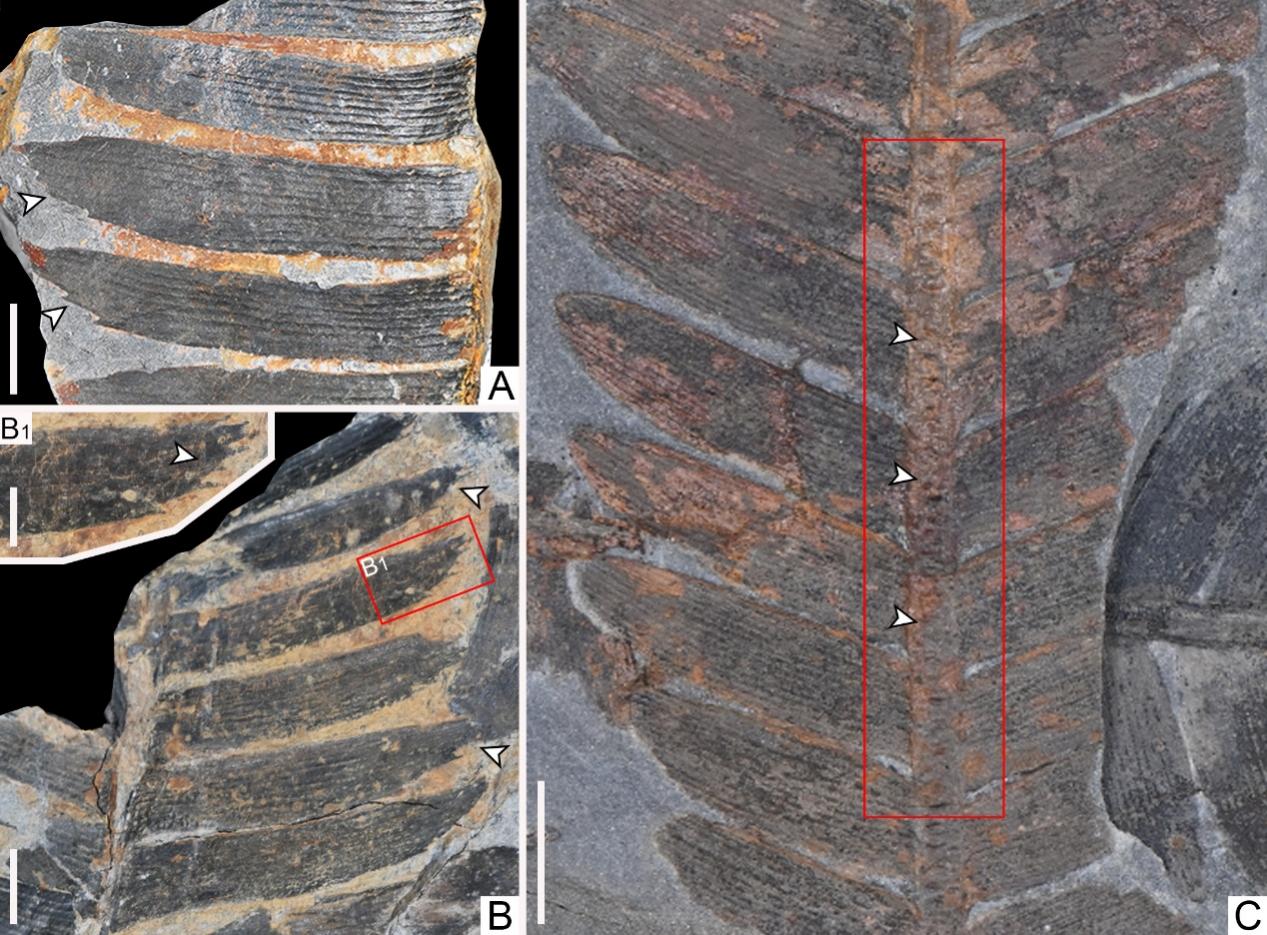A recent investigation of fossil plants reveals the plant–insect interactions across the Triassic–Jurassic boundary in the Sichuan Basin, South China. This study was completed by an international research team led by Prof. WANG Yongdong from the Nanjing Institute of Geology and Palaeontology, Chinese Academy of Science (NIGPAS), with collaboration with Prof. Stephen McLoughlin from the Swedish Museum of Natural History, and published in an international journal of Frontiers in Ecology and Evolution.
Plants and insects are the most diverse and ecologically important organisms in the terrestrial biosphere. Their interactions are also among the richest biotic relationships, and offer significant insights into the evolution of terrestrial ecosystem complexity through the geological record.
The fossil plants of the late Rhaetian Xujiahe Formation and the earliest Jurassic Zhenzhuchong Formation floral assemblages provides the first data on foliar herbivory generated by terrestrial arthropods across the Triassic–Jurassic transition in the eastern Tethys (East Asia) region.
“The damage types from the two studied fossil assemblages are collectively attributed to seven functional feeding and egg-laying categories (i.e., hole feeding, margin feeding, surface feeding, skeletonization, piercing and sucking, oviposition, and galling)", says XU Yuanyuan from the research team. Most feeding strategies are spread across the major plant groups and persist through theTriassic–Jurassic boundary, with the exception of skeletonization (a category of external foliage feeding), which was restricted to the latest Triassic within dipteridacean ferns.
The survey reveals that the respective frequency and diversity of interactions between plants and insects prior to and following the end-Triassic mass extinction event are almost the same, despite a substantial turnover of floral components. This suggests that insect herbivores were largely able to transfer to alternative (but commonly related) plant groups during the dramatic floristic turnover and environmental changes at the end of the Triassic.
Sporadic occurrences of foliar modifications, such as marginal cusps on pinnules of Pterophyllum and prominent ridges on the rachises of some ferns and bennettites are interpreted as adaptations for defense against insect herbivores. XU says, “A few differences in taxonomic composition and herbivory representation between the latest Triassic Xujiahe flora and the earliest Jurassic Zhenzhuchong flora are more likely to be related to collection and preservational biases rather than reflecting palaeoecological changes”.
This preliminary assessment of herbivory across the Triassic–Jurassic boundary requires complementary studies within the Sichuan Basin, South China, to verify the regional patterns of vegetation and herbivory change in the subtropics of East Asia, and also encourage equivalent investigations from other parts of the world to clarify the global patterns of plant–insect interactions and floristic change across this major event in Earth’s history.
This study is financially supported by the National Natural Science Foundation of China, the Swedish Research Council and CSC.
Reference: Yuanyuan Xu, Yongdong Wang*, Liqin Li, Ning Lu, Yanbin Zhu, Zhuanli Huang, & Stephen McLoughlin*, 2023. Plant-insect interactions across the Triassic–Jurassic boundary in the Sichuan Basin, South China. Frontiers in Ecology and Evolution, 11: 1338865. https://doi.org/10.3389/fevo.2023.1338865.

Figure 1. Diversity of damage types among the various plant groups and the proportion of functional feeding groups represented within the uppermost Triassic and Lower Jurassic assemblages.

Figure 2. Examples of various damage types on different plant groups from Member VII of the Xujiahe Formation.

Figure 3. Examples of various damage types on different plant groups from the Bed 2 of the Zhenzhuchong Formation.

Figure 4. Examples of physical defenses on some leaf fragments. (A, B) Showing prominent teeth on the apices of pinnules of Pterophyllum ctenoides. (C) Showing obvious thickening ridges (wrinkles) on the rachis of Pterophyllum ctenoides.
Contact:
LIU Yun, Propagandist
Email: yunliu@nigpas.ac.cn
Nanjing Institute of Geology and Palaeontology, Chinese Academy of Sciences
Nanjing, Jiangsu 210008, China
Download:
